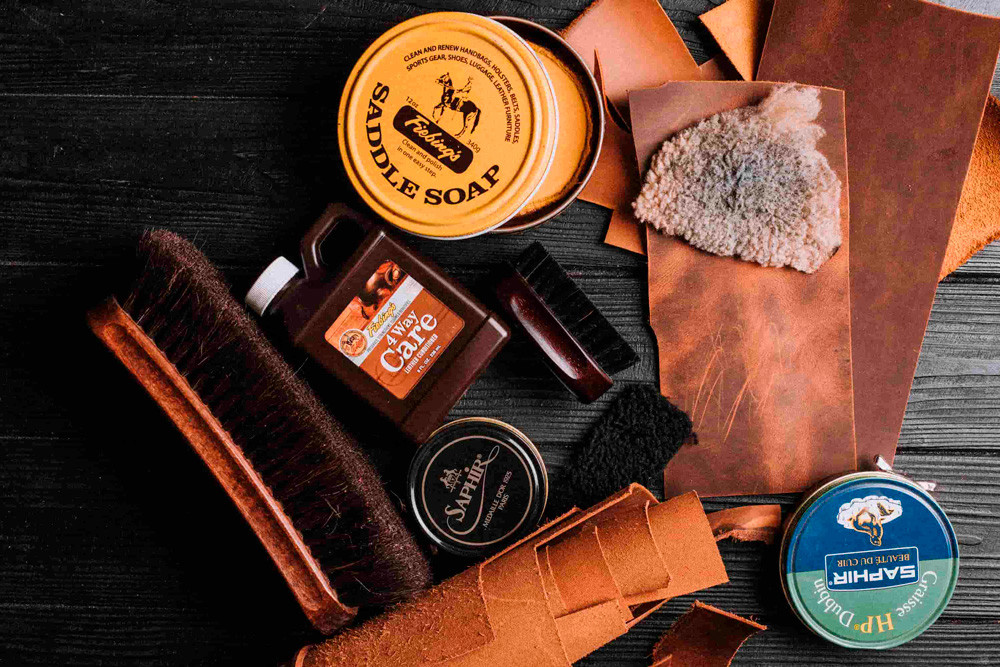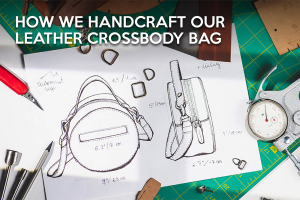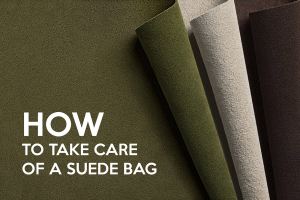How to Take Care of Leather Products?

We'd like to share some tips on how to take care of leather goods.
Following these simple dos and don'ts, you'll enjoy your best-loved leather items for many years ahead:
- Do keep leather goods in a dry and well-aired room
- Do store light and dark leather items separately
- When no need to use them for a long time, do keep leather goods in an original box or other eco-friendly bags
- Do wipe the area with a cloth slightly dampened with mild soapy water
- Do use special cosmetic treatments to provide an additional level of protection
- Do test any cleaning method or cleanser on the smallest, inconspicuous leather area
- Don't wash leather goods in a washing machine
- Don't iron leather goods
- Don't dry leather goods with any artificial sources of heat
- Don't steam-press leather goods
- Don't clean leather goods with wet wipes
- Don't clean leather with any kind of detergent
More detailed information about the most common mistakes about leather care you can find in our article.
Each leather type has its unique properties which define ways of care. Find your favorite leather type and learn what is specific to its maintenance.
Crazy Horse leather
Guided by our simple recommendations for the care of Crazy Horse leather products, you will further emphasize their indescribable "antique" charm and preserve their beauty for many years.
- To treat the slight stains or dirt, wipe it with the most ordinary cloth dampened with mild soapy water.
- Attention! In any case, do not use hygienic alcohol-containing wet wipes to smooth the surface of the leather! Alcohol has a detrimental effect on the texture of leather.
- You can smooth out the slightest scratches on the leather by rubbing them with your fingers or applying a small amount of leather conditioner or neutral hand cream, spreading it with a clean dry cotton cloth.
- Crazy Horse leather is hydrophobic. If you cannot avoid the trouble of catching it in the rain, allow the product to dry naturally without using artificial heat sources (radiator, hairdryer, etc.). If the product is wet, it must be slightly blotted with a dry clean cloth and allowed to dry naturally (do not use heating devices for drying; otherwise, the leather will dry out, and its surface will lose its original appearance and flexibility), once the leather is dry, apply a thin layer of specialized leather care products or neutral hand cream to the front side of the product.
- Condition the leather regularly, once every 3-6 months. If you do not have a special leather conditioner, use a neutral (without fragrance and color) hand cream instead. Before conditioning the leather, it's recommendable to test a small amount of conditioner on an inconspicuous area of leather to see how the material will react and wipe the leather from dust and dirt with a soft, damp cloth.
- When wiping the product with a damp cloth to eliminate slight scratches, do not do it too intensively – strong friction can lead to a noticeable change in the surface color and damage the leather texture.
Storage
To avoid color loss and the appearance of unpleasant odors during the storage of leather products, follow the simple recommendations:
- Store leather products in a dry, dark place, avoid direct sunlight and do not use sealed plastic bags. "Breathable" covers made of natural materials are best suited.
- To prevent possible loss of shape during storage, stuff bulky accessories (for example, leather bags) with old newspapers or other soft paper.
Pebbled leather
Designed to be impressively unique, genuine pebbled grain stuns with beautiful patterns and soft texture. Its timeless appeal pairs with excellent quality while being less prone to moisture and scratches, and thus, effortlessly blending into your active lifestyle.
- To clean the slight spots use a dry cotton cloth dampened with mild soapy water.
- Attention! Don't clean leather with wet wipes and don't apply conditioner onto the leather.
- Pebbled leather, known for its textured surface and resilience, still requires careful handling to prevent damage. Exposure to water can lead to staining, discoloration, and weakening of the leather over time.
- In case of accidental spills or rain, promptly blot the leather with a dry cotton cloth to remove excess moisture.
- Allow it to air dry naturally without artificial heat sources like a hairdryer or radiator, away from direct sunlight and heat.
- When you don't use your pebbled leather items, it's better to store them in separate "breathable" bags stuffed with old newspaper or other soft paper in a dry, cool place to avoid color transfer, discoloration, and possible loss of shape.
Full-grain vegetable-tanned leather
The first thing that must be mentioned about this type of leather is that it’s perfect in its imperfection. Full-grain vegetable-tanned leather is beloved for its natural beauty and minimalistic finish which showcases the leather's original properties. This type of leather is tanned using plant-based materials, giving it a distinctive, vintage-like character and the ability to develop a patina and get tan under the sun. However, due to its minimal finish, this leather is more susceptible to scratches, stains, and other changes in appearance over time. To protect and maintain your full-grain vegetable-tanned leather products, handle them carefully and avoid exposure to harsh substances and conditions.
- Condition the leather regularly, once every 3-6 months.
- Avoid exposure to water and detergents.
- Address stains and dirt immediately.
Full-grain leather
- To treat the slight stains or dirt, wipe it with the most ordinary cloth dampened with mild soapy water.
- Attention! In any case, do not use wet wipes.
- To smooth the texture, apply a small amount of leather conditioner or neutral hand cream, spreading with a dry cotton cloth.
- Avoid exposure to water. If you cannot avoid the trouble and the leather item gets wet, allow it to air dry naturally without artificial heat sources (radiator, hairdryer, etc.). Once the leather is dry, apply a thin layer of leather conditioner or neutral hand cream, gently spreading it with a dry cotton cloth.
- Condition the leather regularly, once every 3-6 months. If you do not have a special leather conditioner, use a neutral (without fragrance and color) hand cream instead. Before conditioning the leather, test a small amount of conditioner on an inconspicuous area of leather to see how leather will react, and wipe leather from dust and dirt with a soft, damp cloth.
- When wiping the product with a damp cloth, do not do it too intensively – strong friction can lead to a slight but noticeable change in the surface color and damage the leather texture.
- Store leather products in a dry, dark place, avoid direct sunlight, and use “breathable” bags.
Finished Genuine Suede
Daily Care
- Gently wipe the surface with a slightly damp microfiber cloth to remove dust. Avoid using regular wet wipes, as they often contain alcohol, which can damage the protective layer.
- If you desire a neat and plush look for your suede, brush it gently in one direction with a soft-bristled brush. A horsehair brush works best, though it's optional. This technique also helps smooth out light scuffs or marks.
Removing Stains
- For dry dirt, use a suede eraser or a soft brush to gently lift it away.
- To tackle greasy stains, apply cornstarch, baking soda, or talcum powder. Allow it to sit for 2–3 hours in a dry, shaded area, then brush off gently. For best results, follow up with a suede eraser to refresh the surface.
How to Dry Suede Properly
- Finished suede resists light moisture but isn’t waterproof. If it gets soaked, blot off any excess water and avoid direct heat.
- Never dry suede near a radiator or with a hair dryer – this can make the texture stiff. Instead, fill the bag with soft paper (like napkins) and let it dry naturally in a well-ventilated space, away from sunlight.
If Suede Feels Stiff
- To restore a stiff suede texture, hold the bag or suede area about 6–8 inches away and expose it to steam for 1–2 minutes. Do not soak the material; instead, allow the steam to gently relax the fibers. Once dry, use a soft brush to restore the plush texture.
Storage Tips
- To help your bag keep its shape and protect the suede from dust and fading, fill it with paper and store it in the cloth bag we include with every suede bag.
- Avoid using plastic bags, as suede requires airflow, and trapped moisture can lead to mold formation.
Preventive Care
- Every few months, lightly treat your bag with a water-repellent spray designed for suede. Always test on a discreet area first to make sure it doesn’t alter the color or texture.







